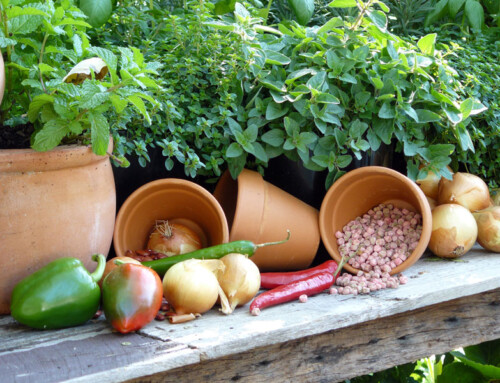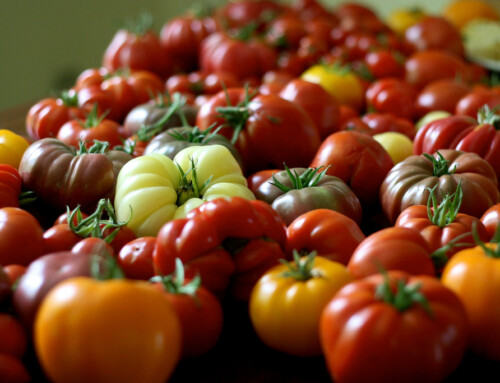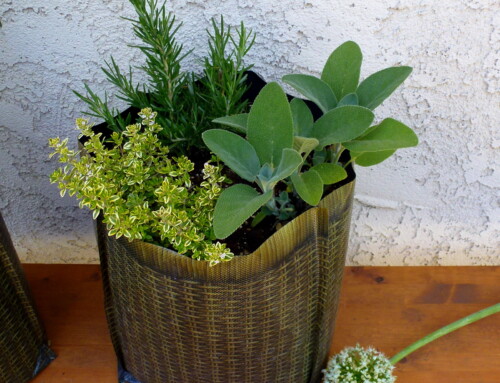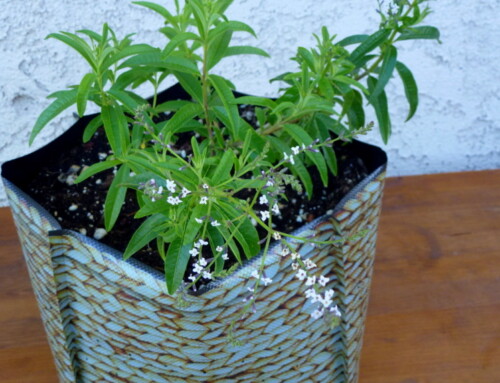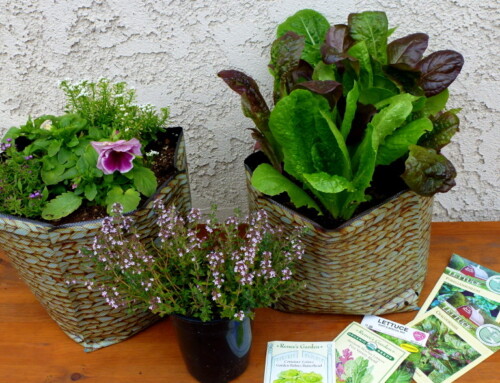When it comes to giving from the heart, nothing does it better than the homemade variety; store-bought presents just can’t compete. Herbal vinegars are easy to make, inexpensive, beautiful and useful. Plus the herb combination is unique to both its creator and recipient.
There are many vinegar types to choose from such as white wine vinegar, apple cider vinegar, malt vinegar, red wine vinegar, rice vinegar and even champagne vinegar. One type you don’t want to use is distilled vinegar. It’s mainly used in household cleaners and doesn’t make a flavorful base for delicious herbal vinegars.
Recipe possibilities are endless as you can make a variety of herb blends using herbs such as rosemary, tarragon, sage, parsley, cilantro, thyme, lemon balm, basil, chervil, bay, fennel, dill leaves, mint, savory, marjoram, hot pepper and garlic. Edible flowers can also add interesting flavors, as well as colors. Peruse your kitchen garden for flowers like lavender, nasturtium, clover, chive flowers, sweet violet, thyme flowers, rose petals, carnation, borage flowers, basil flowers and primrose.
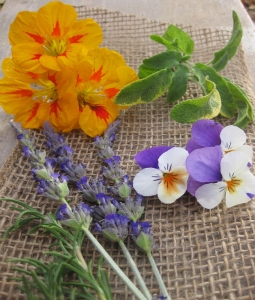 What You’ll Need to Make Herbal Vinegars
What You’ll Need to Make Herbal Vinegars
- Vinegar of your choice
- Assorted herbs and edible flowers
- Big mason jar or other lidded glass container to steep vinegar
- Wooden spoon
- Funnel
- Muslin or cheesecloth
- Decorative bottle with a cork or air-tight cap
- Burlap, ribbon, raffia, artsy tags, or other embellishments for the outside of bottle
Directions for Herbal Vinegars
The most important thing to remember when infusing flavored vinegars is to add plenty of herbs. Think of them as a partner to the vinegar, as opposed to a garnish. If you’re using dried herbs, the measurements are roughly 1/2 cup herbs to 2 cups of vinegar.
If you’re using herbs fresh from the garden, harvest leaves or flowers early in the morning while the flavors are the most intense. Rinse or wash the plants and then dry them thoroughly with a paper towel. Then add 1 full cup to the vinegar.
Sterilize all jars and bottles and let them dry thoroughly before beginning. In a mason jar (or other container), add your vinegar and your herbs. Submerge the herbs by pressing them into the vinegar with a wooden spoon. If I’m adding garlic, I can’t resist crushing them just a little to release the flavor faster. To prevent mold from showing up, be sure that all of the herbs are completely covered by the vinegar both in the original steeping jar and the final decorative bottle.
Screw the lid onto the jar and let it sit a cool, dark place for about two weeks. Feel free to give it a shake every now and again to help release the herbal flavors. After 10 days or so, open the jar and taste it to see if it’s to your liking. You can always add more herbs, flowers or garlic if need be.
Once you’re happy with it pour the flavored vinegar into a decorative bottle by pressing the muslin or doubled cheesecloth down inside the mouth of the funnel so that the herbs are strained out while you’re pouring. Add a fresh spring or two (or three) of the herbs that were used for decoration and added flavor.
Decorate the top or body of the bottle with raffia, ribbon or other decorations. Don’t forget to add a unique tag describing the vinegar. After you present your gift, let the receiver know that their vinegar should be kept in a cool, dark place in order to retain the wonderful flavor. Herbal vinegars are good for a year or more while stored, and about three months or longer after they’re opened.



